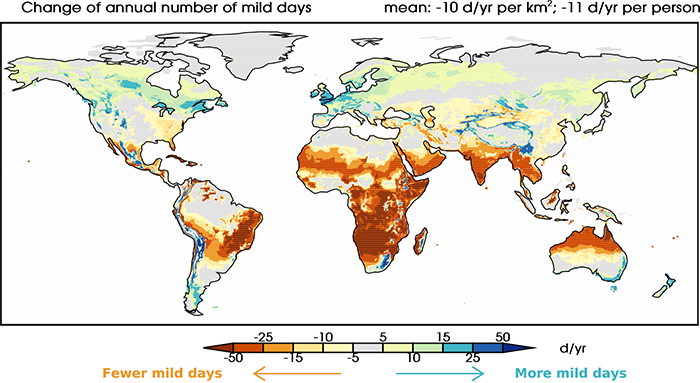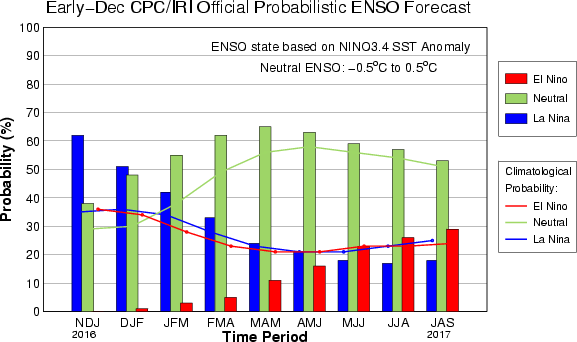Climate science
-

AgWeb reprinted a story from Bloomberg News this week describing some troubling results of a study by researchers from the Potsdam Institute for Climate Impact Research and the University of Chicago. The study shows that with the warmer temperatures expected from global warming, yields of corn and soybeans could drop significantly. According to the article,…
-

What’s your favorite kind of weather? What temperatures do you like best? While there is likely to be a range of values in your group of friends, scientists generally define “mild” weather as temperatures between 64 and 86 degrees F, with less than a half inch of rain and dew points below 68 degrees F, indicative…
-

Those of us who watch the tropics for signs of El Niño or La Niña have noted that the recent weak La Niña seems to be dissipating pretty quickly. What will come next? Some of the models that have just come out are predicting a return to El Niño, and this set social media abuzz.…
-

Back in 2016 the weather station at Mount Mitchell in North Carolina reported that they had received 41 inches of snow in a single 24-hour period. If that had been correct, it would have been a new record for the state. But a committee of state weather experts examined the observation and determined that it…
-

A new map based on research recently published in Geophysical Research Letters shows that most of the northern US is increasing in susceptibility to flooding based on trends in water tables. In the South and Southeast, recent droughts have lowered water tables and stream flows, reducing their likelihood of flooding. You can read more about…
-

As temperatures get warmer, scientists expect that there may be impacts on soil health. To look at that, some Australian scientists tried to determine how warmer temperatures would affect soil carbon, a measure of oil health. They looked at 12 different model simulations and found that while most of them predicted a decrease in soil…
-

USA Today reported earlier this week that a new study of 500-year-old clams published in Nature Communications shows that the oceans are experiencing changes in ocean chemistry that have not occurred in the last 1000 years. The clam shells have growth rings similar to tree rings that can be related to climate conditions in specific…